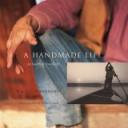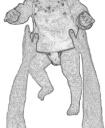
We are dreaming about moving to a new place. For us that means selling this one and buying another one of approximately the same price, which means that, if we want to move, we need to move out- out of Brookline.
We’re currently in a 1050 sq.f. basement apartment in a condominium. We adore our cozy little pad, but we miss direct sunlight and a view of the sky! Bumping up against short-sighted condo-rules and residents, and the constant feeling of being walked-all-over (by our heavy-footed, insomniac upstairs neighbor) are wearing on us.
We love Brookline too, especially our “Corner”, but we can’t afford to move into a house around here, let alone one with land. Just moving up a floor will exhaust the budget. And to be honest, I get way too uspet about the incessant, false orchestra of air conditioners and leaf blowers in these crowded burbs.
If we move out far enough, we could even buy a 1500 sq.f. house on an acre of land for the price for which we could sell our little basement. That sounds like a good deal!
- Land and house for a child
We’re looking for a sizable plot because we want to grow our own vegetables – preferably permaculture style – and keep some animals, like chickens and goats and bees. We won’t complain if the lot is partially wooded as well.
As for the house, we would like a little bit more living space – 1500 sq.f. would be perfect – because we want one another’s in-laws (isn’t that a nice way of putting it?) to come visit for longer stretches of time. After traversing a wide-open space of at least 1,000 miles, and in most cases 3,000 miles, to visit us, they get cabin-feverish in our cramped and dark quarters. And we relish the thought of having friends, any well-wishers, staying over.
As I wrote in an earlier entry, our daughter Amie plays a large role in this plan. She is forcing us to more thoughtfulness, accountability, and action. Because, one of these days, she is going to ask: Why? And: What did you do? I dread that day, and I dream of it with a passion. And I want to be ready. But most of all, I want her to be ready.
I want Amie to grow up in a more natural environment, one in which she will know what a goat is, and even how to milk it. One in which we can let her run around butt-naked, if she so pleases. And lift a log and marvel at the world underneath.
If she fits into a place that wears life and death on its sleeve: the slow geography of the land, the biology of the tree, the quickness of an insect, the poetry of a field… if she can learn about these through immersion and hands-on, face-to-face encounters… will her understanding of the world and herself be richer? I think so.
If she feels at home in the natural world with its examples of wholesomeness and self-sufficiency, calm and beauty, and occasional disaster… if it makes her aware of her own freedom and responsibility as a human… will she become a kinder, more flexible, happier person? I believe so.
Who will contradict me? (Go ahead, you will only make me stronger.)
Of course, bringing our daughter into nature is a necessary (in my eyes), but not sufficient condition for a child’s happiness. Nature won’t do the parenting for us! But our case of the “nuclear family†is extreme:  Amie has never met our nearest relatives, who live 1000 miles away. We have friends who have her and our best interest at heart, but circumstances conspire against us meeting more often. I guess Amie counts her group at daycare as her “extended family”.
This is not the best that we can do. Especially because, soon, the free and frolicking life of daycare will be replaced by the formal setting of school (I am still considering home-un-schooling, at least part time). I don’t know of any kid who calls his class his “family”.
Can we be it? Two people, the same age and with (more or less) the same interests and routines? Two people who, at the end of the day, would like to rest a bit?
Amie needs more diverse company, a more miscellaneous family. Siblings would be nice (an older sibling especially), but let’s add another layer of community: family and friends who come, not to visit, but to stay and be at home with us. Another layer of wisdom: if grandparents want to put their minds out to graze (i.e., retire), they can do so in our pasture! Another layer of communication: adult conversation, discussion of complex things, mature problem solving. Another layer of character and doing things: all the many different ways in which each of us experiences joy and grief. And another layer of time: the more people in a community, the more time there is between them, for them.
Hence, the bigger house. Not too much bigger: we don’t want to avoid one another! And when there is need for space, there will be outside, in the peace and silence of a garden and a wood.
- A happy child for a grim future
I believe that, in the future, these two aspects – nature and community – will be essential to survival. I am one of those people who have a grim view of the future, but who also believe that we each have to do our bit to make it a little less grim.
By “grim,” I should add, I don’t mean “poor” in the current sense of no oil, no “freedom” to consume cheap and unhealthy junk, no “leisure” and world-travel, and – my goodness! – the necessity of physical labor! I believe that we can turn all of these “crises” into opportunities for more wholesome lives in a better society. No, my “grim” refers to the fact that the majority of us will not see it that way, that there will be helplessness, chaos, famine and violence due to ill-preparedness and ill-will.
In such an environment, I want to inject some hope, namely my daughter. She can be a teacher of the skills needed to grow food and take care of animals and build shelters and tools, a safe-keeper of the rational will to manage natural resources responsibly, and a model of hard work with enthusiasm, purpose and fulfillment. She can show, by the example of her own life, that life in a “poorer” world can be richer.
I know! That’s a lot. And she’s not yet two. And she may not want to. But I’m going to give her the chance, and the time.
Growing one’s own food, because due to the rise in oil prices as it gets scarcer, most food will be too expensive, and there won’t be enough local food for all – so that will go up in price too. The idea is to grow enough food for ourselves as a family, to build up to more for friends and neighbors, and to lay the foundation for the poosibility of a larger food production, in case more need it. “Enough for all” should be the goal.
Sigh.Â
I wrote about this in May. In fact, that old entry begins exactly like this one! What’s keeping us?
It’s not a risk – I would never call it a risk. Remaining where we are, in place as well as in life: that’s a risk, a sure one.
Sure, there will be times when I will complain about the crops failing, the water bill being higher than expected, that pesky goat… when I may wish it all to kingdom come! But at least those will be particular grievances that I can pinpoint, voice, and then set out to solve. That’s not what I can say about this dulled, vague life, in which our needs and grievances are manufactured by advertisement and “what our neighbor does”.
But I find the entrapment of our conventional lives to be tight-fitting, not easily shaken off: financial security, immigration issues, anxiety about good schooling… And then there is character: if you’re one to always over-prepare, you’re never ready, especially in a situation where you can never be prepared enough… And, oh, let’s not forget that there are two decision-makers (more, if you count the mortgage-people, and the government, etc., but mainly the two of us), and we’re not exactly on the same wavelength, cruising at the same speed…
So we’re working on it. I guess that’s what this blog is turning out to be: a record of our progress or lack thereof, and a public scrutiny to keep us honest.




